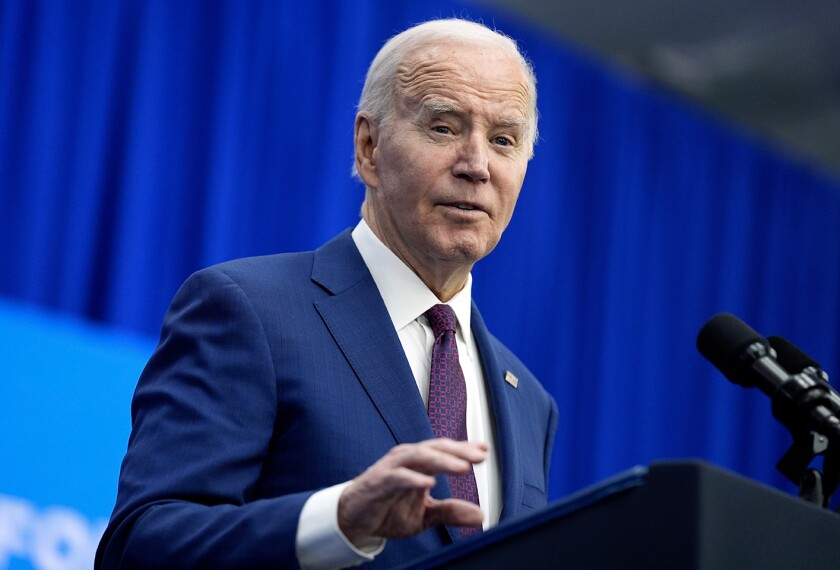A last-minute deal has assured Michigan school districts that they will receive a slight increase in funding in the new fiscal year that begins Oct. 1, despite the state’s $1.2 billion budget shortfall.
While most Michigan districts were slated to receive a nominal increase in their per-pupil allotment in fiscal 2005, some of the state’s higher-spending districts were bracing for another year of flat funding as part of a balanced- budget plan.
Gov. Jennifer M. Granholm, a Democrat, had proposed no increase to the basic state grants for the 22 districts that receive the highest per- pupil allotments from the state. Some Republicans reluctantly supported the plan.
Then, early last week, after a highly visible protest by those districts and other educators, a new deal was struck that would let the state use proceeds from pending sales of surplus state land to pay the $6.6 million tab—$74 per student—for giving the higher-spending districts the same raise that the rest of the districts would receive.
Late last week, the House and the Senate passed the $37 billion compromise budget plan that would put about $12.5 billion into the K-12 education budget. Gov. Granholm was expected to sign it as soon as her legislative staff reviewed it.
“It’s a one-time fix, and so much of the budget is one-time fixes,” said Sen. Ron Jelineck, the Republican who heads the Senate committee that oversees education appropriations. “However, it helps fulfill the intention of what we said we would do for education.”
“I think our final compromise shows that we’re very excited that every school district in the state will see an increase,” said Greg Bird, a spokesman for the state’s management and budget agency. “Our main concern before was that those other school districts not be harmed, and we were able to find money through compromise.”
Actually a Cut?
But education groups were not impressed.
The Michigan Association of School Boards warned that the plan, which Gov. Granholm and legislators were advertising as providing slight per-pupil increases, really amounted to a cut, when factoring in inflation and midyear cuts from the previous two years.
“Ultimately, both [Democrats and Republicans] were willing to do the cuts. Now in the end, both are saying that they’ve found the solution,” said Don Wotruba, the legislative analyst for the boards’ group. “Ultimately, we still have a revenue problem in Michigan.”
Legislators countered that the state was not recovering well enough from its economic downturn, and that they were trying to spare education from as many cuts as possible.
“We want to do as much as we can for education,” said Keith Ledbetter, the press secretary for Speaker of the House Rick Johnson, a Republican. “It’s the only area of state government that hasn’t received a cut, and they’ve done pretty well considering how other entities have had to fare.”
Fighting Back
The current dispute is part of long-running debate over a state law that was designed to ease inequities in spending between Michigan school districts.
Proposal A, the state’s 1993 ballot measure that stringently capped property taxes and turned over the responsibility for most education funding to the state, was designed to ease the funding gaps between districts and increase the amount spent by the lowest-income districts.
But it also contained a hold-harmless provision that allows wealthier districts to continue spending considerably more on their students than their low-income counterparts do.
In the past 11 years, however, the plan has boosted the minimum funding at a higher rate for the lowest-spending districts than it has for the districts that were at higher levels.
Under the budget plan, this year’s minimum per-pupil grant is to be $6,700. Twenty-two districts, known as “20-J” districts, were slated to receive at least $9,000 per student.
Six of the 20-J districts were in Oakland County, the state’s wealthiest area, which lies north of Detroit near Flint.
County Executive L. Brooks Patterson launched a campaign to restore the minimum increases in per-pupil spending for those districts—calling together all the superintendents in Oakland County, plus some from other districts, for a press conference and lobbying campaign to raise the pressure on state lawmakers.
His strategy worked.
Mr. Patterson said in an interview last week that the 20-J districts had already approved school budgets and started their school years counting on a minimal increase from the state. It would be difficult, he added, to make cuts at this point.
Further, he said, the 20-J districts are constantly being targeted for cuts even though they also need the money.
“Oftentimes, when there is a budget shortfall, they look to us, and say we can afford to give a little,” Mr. Patterson said. “Maybe the first time, maybe the second time, but along about the 20th time you begin to see a pattern.”
“We have to fight back; we cannot be the bank for the state,” he added.




